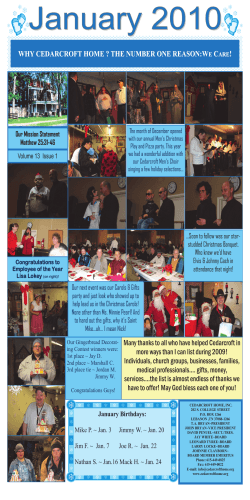
Bryan Whitehead
Series HOME AWAY FROM HOME 1 IndigoDreams Bryan Whitehead Preserving and Passing Down Japanese Textile Techniques HELEN A. LANGFORD-MATSUI T HE intensity of purple-blue indigo dye— aizome in Japanese—mirrors the concentrated devotion required to prepare it. From planting seeds to harvesting, drying, fermenting, and finally to dyeing, it’s a yearlong process that, while once common, is now pursued by only a small number of artisans. One of those artisans is Canadian Bryan Whitehead, who has been farming, processing and working with the dye for twenty-one years. Based in a mountain village on the edge of the small town of Fujino on the west side of Tokyo, Bryan first began to explore the ancient dyeing technique in 1994. 28 | highlighting japan Now he farms a hundred-tsubo (roughly 330 square meters) field of Polygonum tinctorium, one of the plants from which the pigment for making indigo can be extracted. A good summer yields three harvests of leaves, which Bryan ferments over the fall and winter months. He uses the resulting composted indigo paste to dye textiles and self-reeled and spun silk thread. He’s also been raising silkworms and processing silk as well as weaving textiles from the silk he produces for nineteen years. It’s a far cry from a career in advertising, which is what Bryan imagined himself doing after finishing school. Quickly deciding that a future of promoting materialism wasn’t for him, he left Canada for Asia, arriving in Japan on his twenty-fifth birthday with a five-year plan. He began his creative career by studying sumi-e (Japanese ink painting). Somewhere along the line, however, his interest shifted to textiles, and five years became twenty-six and counting. Bryan explains that he “loves luxury; well-made, handmade goods, and the sophisticated attention to 2 4 3 5 detail and design” common to Japanese textiles and other things Japanese. Japan, he continues, is also good for craftspeople, with a supportive, appreciative audience and a long, rich cultural history from which to draw. That history includes an indigo industry that is said to stretch back at least a thousand years, reaching its peak during the Edo Period (1603-1868) when textiles dyed a deep blue were ubiquitous. The creation of a synthetic indigo dye in the late nineteenth century, however, saw traditional indigo production drop dramatically, putting time-honored techniques at risk of disappearing altogether. Bryan is part of an indigo revival of sorts, as people the world over rediscover the depth and variety of color that traditionally made indigo can produce. For the past ten years, he’s been teaching dyeing techniques to a steady stream of students both local and international at his 170-year-old farmhouse. Bryan’s workshops, held in spring and autumn for ten days at a time, draw everyone from professional designers working for famous fashion houses to 1 2 3 4 5 Showing the traditional dyeing process Examples of the depth and variety of color that natural indigo dye can produce Bryan both weaves and dyes textiles Silk hung and ready for dyeing Workshop participants wear indigo garments they produced textile enthusiasts and natural dye hobbyists. The groups are kept small—just seven to ten students—to maximize individual attention and instruction. The workshops cover Bryan’s passions: the history of textiles in Japan, weaving and silk processing, and most importantly, the indigo dyeing techniques of shibori (shape-resist dyeing) and katazome (stencil dyeing). Bryan also introduces students to other traditional crafts during these workshops. Bryan’s aspirations are to share his knowledge, with becoming a better teacher topping the list. “I enjoy watching my students progress,” he explains, adding that what you learn in your twenties and thirties, you give away in your forties and beyond. What Bryan is giving goes beyond the norm, though; not only is he imparting his knowledge to others, he’s giving aizome a new lease on life. april 2015 | 29
© Copyright 2025












